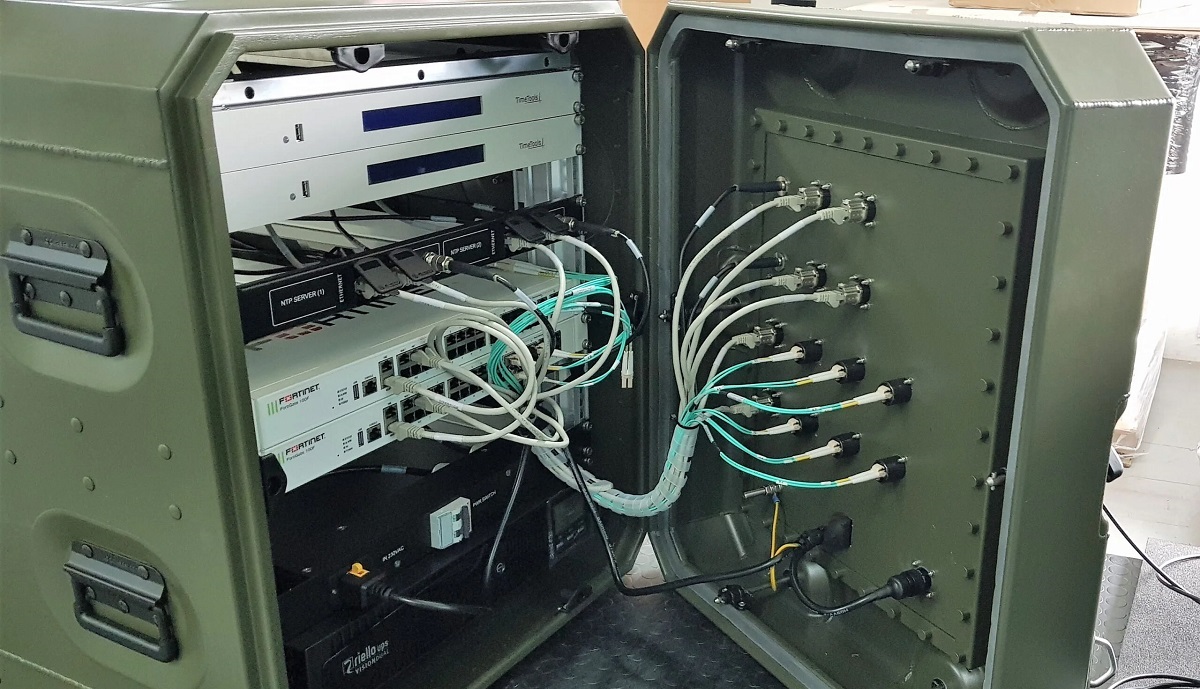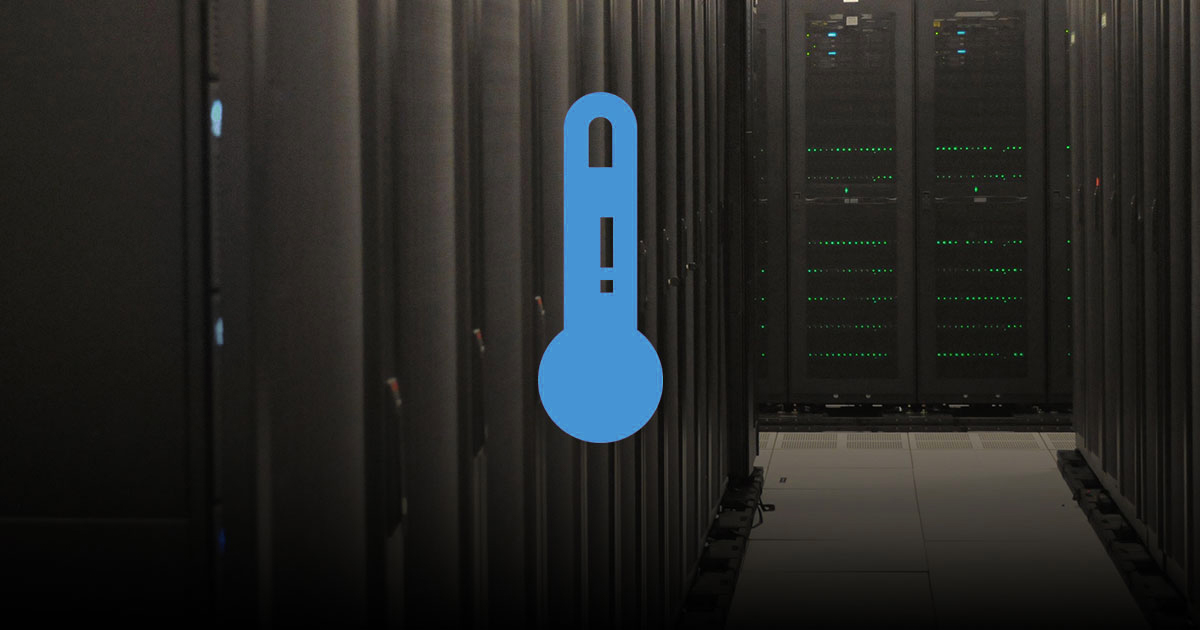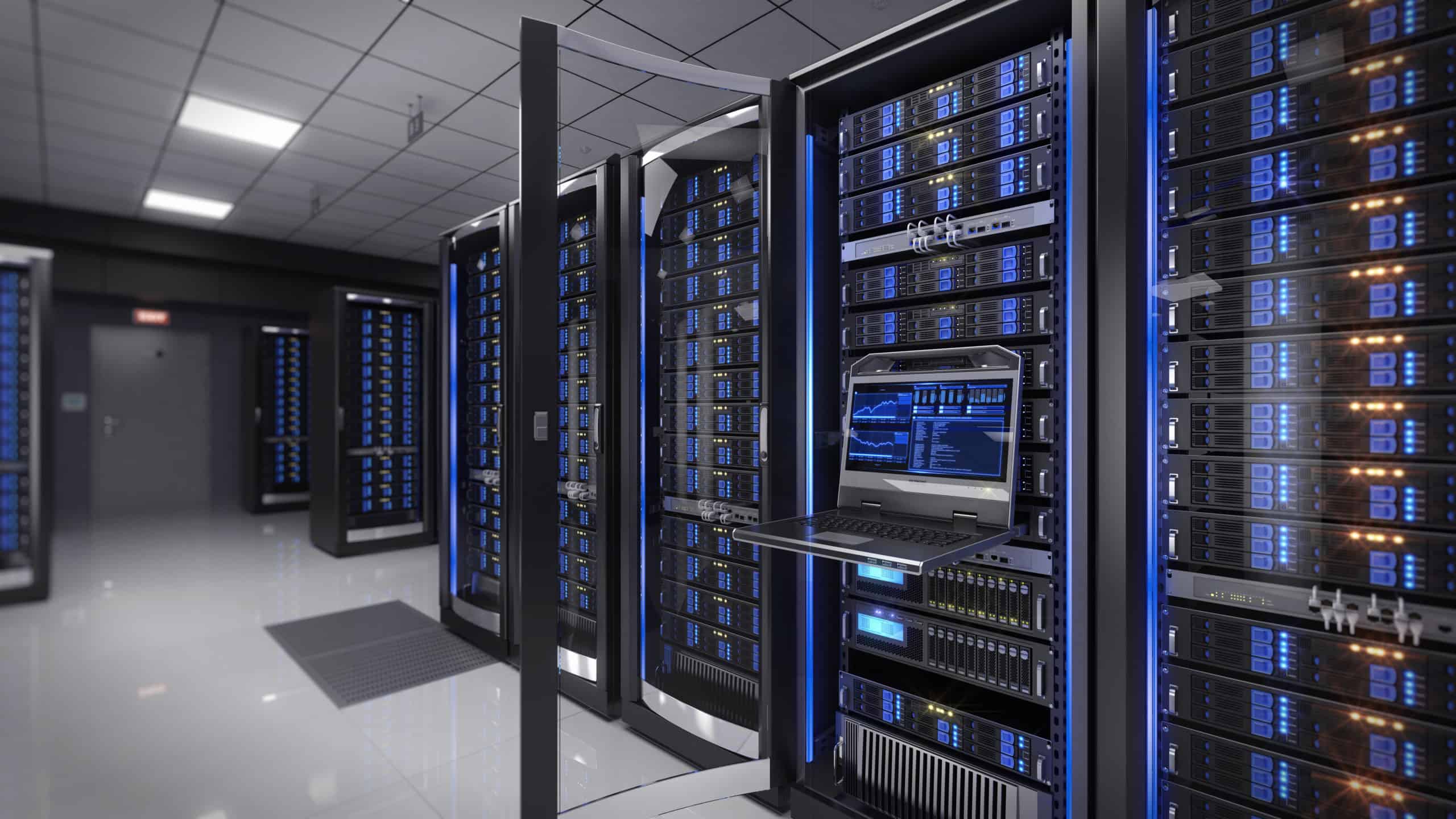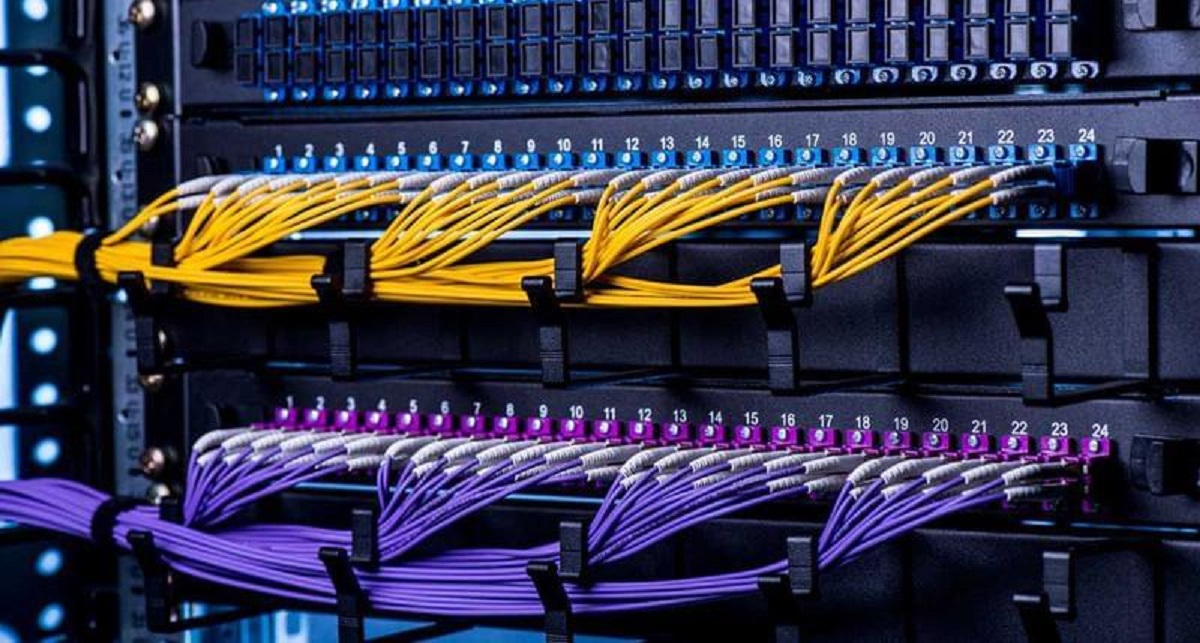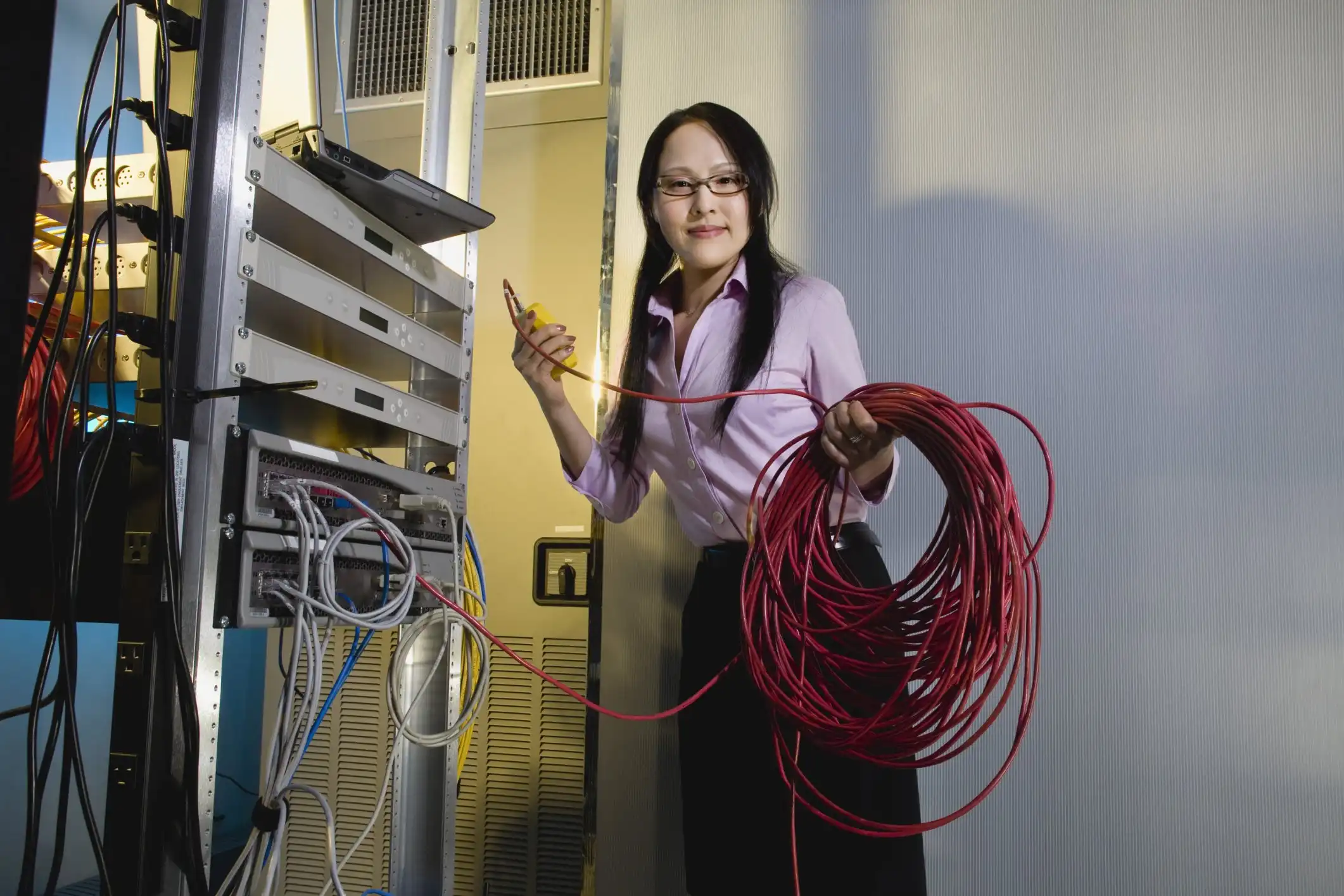Introduction
Welcome to the world of server racks, where heat management is crucial for maintaining optimal performance and prolonging the lifespan of your servers. In this digital age, where businesses heavily rely on data centers and server infrastructure, ensuring the cool and efficient operation of server racks is of paramount importance.
As servers work tirelessly to process and store vast amounts of data, they generate a significant amount of heat. If left unchecked, this heat can have detrimental effects on the performance and stability of the equipment. That’s why it’s crucial to have proper cooling mechanisms in place to mitigate heat buildup and prevent damage to your valuable servers.
In this guide, we will dive into the various strategies and techniques for cooling a server rack effectively. From understanding the principles of heat generation to implementing innovative cooling solutions, we will explore all the essential aspects of maintaining an optimal temperature within your server environment.
Whether you are setting up a new data center or looking to improve the cooling efficiency of your existing server racks, this comprehensive guide will provide you with valuable insights and practical tips to ensure your servers operate at their best.
By the end of this guide, you will have a solid understanding of how to cool a server rack effectively and optimize its performance. So, let’s get started on this journey to create a cool and reliable server infrastructure.
Understanding Heat Generation in a Server Rack
Before diving into cooling strategies, it’s essential to understand how heat is generated within a server rack. Servers, as mighty as they are when it comes to processing power, can also generate a tremendous amount of heat during their operation.
The primary sources of heat in a server rack include the central processing units (CPUs), power supplies, hard drives, and other components that work tirelessly to handle the computational workload. As these components process data, they generate heat as a byproduct, which, if not adequately managed, can lead to heat-related issues and hardware failures.
Some key factors contribute to the heat buildup in a server rack:
- Density: The higher the density of servers in the rack, the greater the heat generation due to the increased number of components running simultaneously.
- Workload: Intensive workloads that require extensive processing power will produce more heat, impacting the overall temperature of the rack.
- Power consumption: Servers with higher power consumption will naturally generate more heat. This is an important consideration when selecting and configuring servers for your rack.
- Location: The environment where the server rack is housed can also affect heat generation. Factors such as ambient temperature, humidity levels, and ventilation play a role in the overall cooling requirements.
It’s crucial to have a clear understanding of the heat generation within your server rack to determine the appropriate cooling measures to implement. By accurately assessing the factors that contribute to heat buildup, you can effectively design a cooling strategy that aligns with the specific needs of your server infrastructure.
Now that we have a foundation of how heat is generated within a server rack, let’s move on to exploring proper rack placement and spacing, which are critical considerations for optimal cooling.
Proper Rack Placement and Spacing
When it comes to cooling a server rack, proper rack placement and spacing are key factors to consider. The way you position your racks and the space you leave between them can have a significant impact on airflow and heat dissipation within your server environment.
Here are some best practices for rack placement and spacing:
- Position racks in a well-ventilated area: Choose a location for your server racks that has proper ventilation and airflow. Avoid placing them in cramped spaces or against walls, as this can restrict airflow and hinder cooling.
- Ensure adequate clearance around the rack: Racks should have enough space around them to allow for proper air circulation. Leave at least a few inches of clearance at the rear and sides of the rack to promote better airflow.
- Follow manufacturer guidelines for rack spacing: Different server rack manufacturers may have specific recommendations for the spacing between racks. Be sure to consult the manufacturer’s guidelines and follow their recommendations for efficient cooling.
- Implement hot and cold aisle configuration: To optimize airflow, consider arranging racks in a hot and cold aisle configuration. This strategy involves positioning racks with the fronts facing each other, creating a cold aisle, while the backs face each other, forming a hot aisle. This setup helps to segregate the intake and exhaust airflow and prevents hot air from recirculating into the servers.
- Use blanking panels: Blank panels should be installed in any empty or unused server rack spaces. These panels prevent air leakage and promote proper airflow within the rack, reducing the risk of hotspots.
By following these guidelines, you can ensure that your server racks are positioned optimally for efficient cooling. Proper placement and spacing will help promote better airflow and reduce the risk of overheating, ensuring the longevity and reliability of your servers.
Now that we have covered rack placement and spacing, let’s move on to the next section, where we will explore the concept of effective airflow management in cooling a server rack.
Implementing Effective Airflow Management
Efficient airflow management is a critical factor in cooling a server rack and maintaining optimal temperatures within the equipment. By properly managing the airflow, you can prevent hotspots, minimize recirculation of hot air, and ensure that cool air reaches the servers where it is needed most.
Here are some key strategies for implementing effective airflow management:
- Organize cables and wires: Proper cable management is essential for maintaining optimal airflow. Ensure that cables are neatly organized, secured, and routed away from the airflow path to prevent obstruction and airflow restrictions.
- Use suitable rack accessories: Deploy rack accessories such as cable management panels, air baffles, and server rack doors with perforations or mesh designs to optimize airflow within the rack. These accessories help direct the airflow and prevent hot air from recirculating back into the servers.
- Separate cold and hot air paths: A well-designed server rack layout should include clear separation between the intake and exhaust airflow paths. This prevents the mixing of cold and hot air, reducing the risk of hotspots and enhancing overall cooling efficiency.
- Consider the position of fans: The positioning of fans within the server rack is crucial for effective airflow management. Mount fans at strategic locations to ensure proper air movement and minimize areas of stagnant air.
- Regularly clean and maintain the server rack: Dust and debris can accumulate within the server rack over time, blocking ventilation and impeding airflow. Regularly clean the rack and components to ensure optimal airflow and prevent overheating.
By implementing these airflow management techniques, you can create a well-ventilated server rack environment that promotes efficient cooling. Effective airflow management reduces the workload on cooling systems and helps maintain stable operating temperatures for your servers.
Now that we have explored effective airflow management, let’s delve into optimizing server rack ventilation, which plays a crucial role in maintaining a cool and reliable server infrastructure.
Optimizing Server Rack Ventilation
Proper ventilation is crucial for optimizing the cooling efficiency of a server rack and preventing overheating. Good ventilation ensures a constant supply of cool air and facilitates the removal of hot air from the rack, maintaining stable operating temperatures for your servers.
Here are some strategies to optimize server rack ventilation:
- Utilize perforated doors and side panels: Perforated doors and side panels allow for better airflow and ventilation within the rack. These panels promote the intake of cool air and the expulsion of hot air, helping to prevent heat buildup.
- Ensure adequate space between equipment: It’s important to leave enough space between the servers and other equipment within the rack. This allows air to circulate freely, preventing the formation of hotspots and promoting optimal cooling.
- Install fans for additional ventilation: Depending on the cooling requirements of your servers, you may need to install additional fans within the rack. These fans help increase airflow and enhance ventilation, especially in cases where the server density is high or the ambient temperature is elevated.
- Maintain proper rack elevation: Elevating the server rack slightly above the floor can help improve ventilation. This allows cool air to enter from the bottom and hot air to rise and be expelled more efficiently, reducing the risk of heat buildup.
- Consider using rack-level cooling solutions: In situations where traditional cooling methods may not be sufficient, consider implementing rack-level cooling solutions. These include liquid cooling systems or rear door heat exchangers that remove heat directly from the servers, ensuring effective cooling even in high-density environments.
By optimizing server rack ventilation, you can significantly enhance the effectiveness of your cooling systems and maintain a stable temperature within the rack. Adequate ventilation not only improves the reliability and longevity of your servers but also contributes to overall energy efficiency in your data center.
Now that we have explored optimizing server rack ventilation, let’s move on to the next section, where we will discuss the installation of efficient cooling systems for maximum cooling effectiveness.
Installing Efficient Cooling Systems
Installing efficient cooling systems is essential for effectively managing the temperature in a server rack. These systems work in conjunction with proper airflow management and ventilation to ensure optimal cooling and prevent overheating of the servers.
Here are some key considerations for installing efficient cooling systems:
- Air conditioning units: Air conditioning units are commonly used in data centers and server rooms to regulate temperature and humidity. These units help cool the air in the environment and maintain a constant temperature within the server rack.
- CRAC/CRAH units: Computer Room Air Conditioners (CRAC) and Computer Room Air Handlers (CRAH) are specialized cooling systems designed specifically for data centers. These units provide precise cooling control and can be configured to adjust cooling capacity based on server loads and environmental conditions.
- In-row cooling: In-row cooling systems are placed between server racks and provide targeted cooling directly to the servers. This approach minimizes airflow paths and reduces the risk of hotspots, ensuring efficient cooling for high-density environments.
- Containment systems: Hot and cold aisle containment systems help manage airflow and separate hot and cold air streams within the server rack environment. By containing the hot air and directing it away from the servers, these systems optimize cooling efficiency and reduce energy consumption.
- Rack-mounted cooling units: Rack-mounted cooling units are compact cooling systems that can be directly installed within the server rack. These units ensure localized cooling for specific racks, eliminating the need for complex ductwork and providing efficient cooling for individual server units.
When installing cooling systems, it’s important to consider the specific requirements of your server environment. Factors such as server density, power consumption, and environmental conditions will influence the choice of cooling solutions for maximum effectiveness.
By investing in and properly installing efficient cooling systems, you can ensure that your server racks remain at optimal temperatures, guaranteeing the smooth operation and longevity of your servers.
Now that we have covered the installation of efficient cooling systems, let’s explore the concept of hot and cold aisle containment, which provides an additional layer of cooling optimization for server racks.
Understanding the Use of Hot and Cold Aisle Containment
Hot and cold aisle containment is a popular technique in data centers and server rooms to optimize cooling efficiency and reduce energy consumption. This approach involves separating the hot and cold air streams within the server rack environment, ensuring that cool air is delivered directly to the server intakes and hot air is efficiently removed.
Here’s a closer look at how hot and cold aisle containment works:
Cold Aisle: The cold aisle is created by arranging server racks with their fronts facing each other. The cold air supply is directed into this aisle, and it is kept at a lower temperature than the rest of the room. The cold air is then drawn into the servers’ intake vents, effectively cooling them.
Hot Aisle: The hot aisle is formed by positioning the backs of the server racks facing each other. The hot air exhausted by the servers is expelled into this aisle. The hot air is then extracted using a ventilation system, preventing it from recirculating into the servers or the rest of the room.
The use of hot and cold aisle containment brings several benefits:
- Improved airflow management: By segregating the hot and cold air streams, hot air recirculation is minimized, and cool air is efficiently supplied to the servers. This improves overall airflow management and prevents temperature imbalances and hotspots within the server racks.
- Enhanced cooling efficiency: With precise airflow control, hot and cold aisle containment optimizes cooling efficiency. It ensures that cool air is delivered directly to the servers where it is needed, reducing the workload on cooling systems and improving energy efficiency.
- Reduced cooling costs: Hot and cold aisle containment enables more targeted cooling, reducing the need for excessive cooling throughout the entire data center or server room. This results in cost savings by optimizing cooling resources and reducing energy consumption.
- Consistent temperature control: By maintaining a separation between the hot and cold air streams, hot and cold aisle containment helps achieve more consistent temperature control within the server racks. This promotes a stable operating environment for the servers and minimizes the risk of temperature-related issues.
Hot and cold aisle containment is an effective strategy for efficient cooling in server rack environments. By implementing this technique, you can significantly improve cooling efficiency, reduce energy consumption, and create a more reliable and optimized infrastructure for your servers.
Now that we have explored hot and cold aisle containment, let’s move on to the next section, where we will discuss the importance of monitoring and managing server rack temperature to ensure optimal cooling performance.
Monitoring and Managing Server Rack Temperature
Monitoring and managing server rack temperature is crucial for maintaining optimal cooling performance and ensuring the reliability of your servers. By closely monitoring temperature levels and implementing effective temperature management strategies, you can prevent overheating and mitigate the risk of hardware failures.
Here are some key considerations for monitoring and managing server rack temperature:
- Temperature sensors: Implementing temperature sensors within the server racks allows you to monitor the temperature at various points, ensuring early detection of any temperature anomalies or hotspots.
- Remote monitoring: Utilize remote monitoring tools and software to continuously monitor server rack temperature in real-time. This allows for proactive temperature management and timely response to any temperature fluctuations or issues.
- Alert systems: Set up an alert system that notifies you when the temperature exceeds safe limits. This ensures that you can take immediate action to resolve any cooling issues before they cause damage to your servers.
- Regular maintenance and cleaning: Perform regular maintenance and cleaning of server racks to ensure proper airflow and prevent dust buildup. Dust and debris can obstruct airflow and contribute to higher temperatures within the rack.
- Optimize cooling system settings: If you have cooling systems in place, regularly evaluate and optimize their settings based on server load, environmental conditions, and temperature monitoring data. Fine-tuning these settings can help maintain a stable and efficient cooling environment.
- Temperature trend analysis: Analyze historical temperature data to identify trends and patterns. This can help you identify potential cooling issues, plan for future capacity needs, and optimize cooling strategies to ensure long-term temperature management success.
By monitoring and managing server rack temperature, you can proactively address cooling issues and ensure that your servers operate within recommended temperature ranges. This minimizes the risk of hardware failures, data loss, and costly downtime associated with overheating.
Now that we have explored the importance of monitoring and managing server rack temperature, let’s move on to the next section, where we will discuss implementing additional cooling measures to supplement existing cooling systems.
Implementing Additional Cooling Measures
While proper rack placement, airflow management, and cooling systems are essential for cooling a server rack, there are additional measures you can implement to further enhance cooling efficiency and maintain optimal temperatures. These measures can be particularly useful in scenarios where the server load or environmental conditions demand additional cooling.
Here are some additional cooling measures to consider:
- Supplemental portable cooling units: In situations where the ambient temperature or server load surpasses the capabilities of the existing cooling systems, portable cooling units can be deployed as temporary solutions. These units provide supplementary cooling directly to specific areas or racks that require additional cooling capacity.
- Cold aisle containment curtains: Cold aisle containment curtains are plastic barriers that can be installed within the cold aisles of a server rack environment. These curtains further isolate the cool air and prevent it from mixing with the hot air, improving cooling efficiency and reducing energy consumption.
- Chimney extensions: Chimney extensions are vertical structures that extend from the top of the server racks to the ceiling. By creating a direct path for hot air to rise and be expelled from the room, chimney extensions optimize the hot air extraction process and improve cooling effectiveness.
- Liquid cooling solutions: Liquid cooling solutions involve circulating coolants or water through specialized cooling systems that are directly connected to the servers. This method can provide highly efficient and targeted cooling, particularly for high-density server environments or overclocked systems.
- Adjusting server load: If certain servers or equipment are operating at lower capacities or are not actively in use, consider redistributing workloads across servers to reduce heat generation. This can alleviate the strain on cooling systems and help maintain cooler temperatures within the rack.
Implementing these additional cooling measures can provide the extra cooling boost needed to handle high heat loads or challenging environmental conditions. By adopting these measures, you can ensure that your servers remain within safe temperature limits, minimizing the risk of performance issues and hardware failures.
Now that we have explored implementing additional cooling measures, let’s conclude this guide, summarizing the key takeaways and the importance of maintaining optimal cooling in a server rack environment.
Conclusion
Proper cooling of a server rack is essential for maintaining optimal performance, prolonging the lifespan of your servers, and preventing costly downtime due to overheating. By implementing the strategies and techniques discussed in this guide, you can ensure that your server rack operates within safe temperature limits and remains reliable and efficient.
In this guide, we explored various aspects of cooling a server rack, starting with understanding heat generation and the importance of proper rack placement and spacing. We then delved into techniques such as effective airflow management, optimizing server rack ventilation, and installing efficient cooling systems. Furthermore, we discussed the benefits of hot and cold aisle containment, the significance of monitoring and managing server rack temperature, and the implementation of additional cooling measures.
By following these best practices, you can create a controlled and well-ventilated server rack environment that promotes efficient cooling, minimizes the risk of overheating, and ensures the longevity and reliability of your valuable server infrastructure.
Remember to regularly monitor temperature levels, maintain proper airflow, and keep up with routine maintenance to prevent dust buildup and obstructions. Additionally, stay updated with the latest advancements in cooling technology and implement suitable solutions based on the specific needs of your server rack environment.
Keeping your servers cool is an ongoing process that requires attention and evaluation. By prioritizing cooling and implementing the strategies outlined in this guide, you can optimize the performance and lifespan of your servers, ensuring smooth operations and minimizing the risk of costly system failures.
Now it’s time to put your knowledge into action and create a cool and reliable server rack environment that supports your business needs and keeps your servers running at their best.







